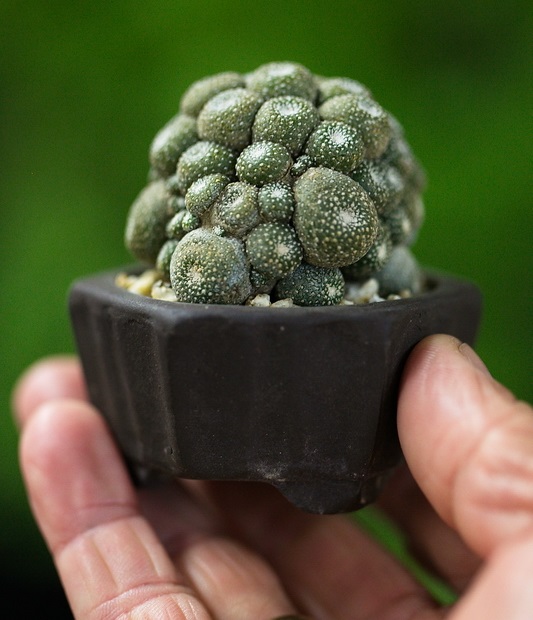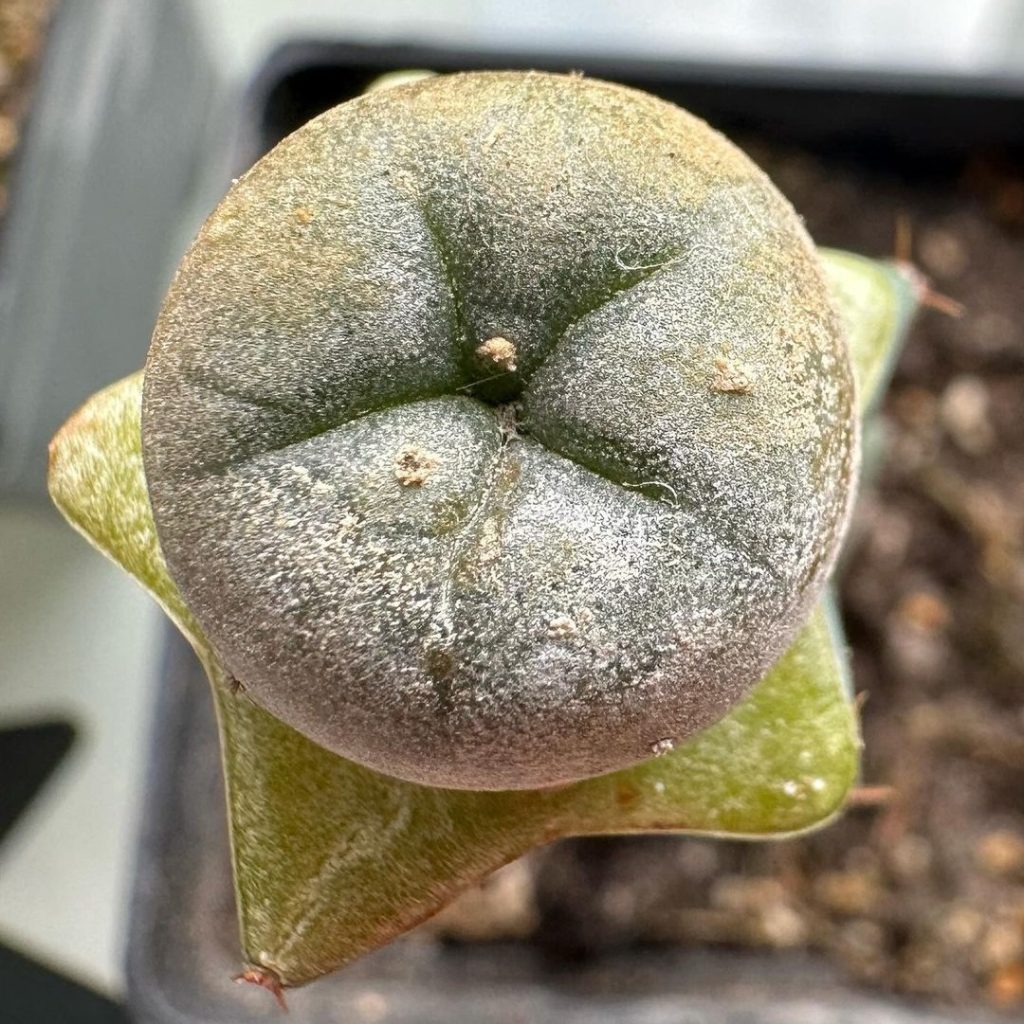You Won’t Believe How Small This Cactus Is: Blossfeldia liliputana
Looking for a cute and tiny addition to your cactus collection? Get ready to be amazed by the Blossfeldia liliputana – the world’s smallest cactus species! This adorable little guy maxes out around 1/2 an inch tall, making it a perfect mini plant for those with limited space.

But don’t let its petite size fool you – the Blossfeldia packs a big punch of personality. With its round shape covered in white dots and beautiful white or pink blooms in summer, it’s an eye-catching miniature marvel. No wonder its name comes from the fictional Lilliputian people in the classic book Gulliver’s Travels!
If you’re imagining how cute this tiny cactus would look on your windowsill, keep reading. This care guide has all the tips to keep your little Blossfeldia liliputana healthy and happy.
Contents
About Blossfeldia liliputana

Native to the Andes mountains of northwestern Argentina and southern Bolivia, the Blossfeldia liliputana grows at elevations between 3,900-11,500 feet. In its natural habitat, it nestles in rock crevices and near waterfalls.
Despite its diminutive size, this cactus is tough and hardy. It’s spineless with no ribs, just a round shape covered in white dots that aid with camouflage. Every summer it rewards growers with striking white or pinkish funnel-shaped flowers.
Related Post:
1,000 Types of Cactus [With Pictures]
How to Care for Blossfeldia liliputana
Light Requirements
The Blossfeldia needs about 6-8 hours of direct sun per day, or bright indirect light. In lower light, it won’t bloom as vibrantly. A grow light is ideal if you can’t provide enough natural sunlight.
Make sure to gradually introduce more light if using a grow light. Start with just 2-3 hours per day, increasing the duration over 2-3 weeks until reaching the desired 6-8 hour maximum.
Watering
As a desert plant, Blossfeldia lilliputana likes infrequent but deep waterings. From spring through fall, allow the soil to fully dry out between waterings.
When the top inch of soil is dry, soak the soil thoroughly until water runs out the drainage holes. Then don’t water again until the soil is completely dry.
In winter when the plant is dormant, keep it totally dry, watering just once if the cactus starts shriveling.
Always avoid getting moisture on the body which can cause scarring or rot.
Soil
Plant your Blossfeldia in a very porous, well-draining potting mix. Use one part potting soil mixed with two parts sand, perlite or pumice.
The roots need an open, airy mix that won’t stay wet for long. Amend with gravel or chicken grit for extra drainage.
The ideal soil pH is between 6-7.

Fertilizing
Feed your Blossfeldia once a month in spring and summer with a balanced liquid fertilizer diluted to 1/4 strength. It doesn’t need additional feeding in fall and winter.
When repotting in spring, you can top dress the soil with a light sprinkling of slow-release cactus fertilizer.
Too much fertilizer will cause the plant to grow too fast and may burn the roots.
Temperature
This cactus prefers average household temperatures of 65-80°F in spring through fall. It goes dormant in winter when temperatures are 40-60°F.
While it can tolerate brief periods down to 25°F, protect it from freezing temperatures or prolonged cold. Introduce your Blossfeldia to warmer or cooler temps gradually.

Pruning
Very little pruning is required for this miniature cactus. Just use clean scissors to remove any dead flowers or shriveled segments to keep it looking its best.
Potting and Repotting
This cactus has a small root system and doesn’t need frequent repotting. Use a well-draining cactus or succulent soil mix.
Repot every two to four years in early spring, moving up just one pot size. Loosen the soil around the roots and repot into a new container with fresh mix.
Pests and Diseases
The good news is that the Blossfeldia liliputana is quite resistant to most pests and diseases when properly cared for. Providing the right soil, lighting, and watering conditions will prevent most issues.
The main threat is rot, which can occur if the cactus is overwatered or kept in soggy soil that doesn’t drain well. The signs are discolored splotches or mushy spots on the cactus body.
To avoid rot, always use a well-draining soil mix and don’t let the plant sit in water. If rot occurs, you may need to uproot and replant in dry soil.
Other than rot, watch out for common houseplant pests like mealybugs or spider mites, which can be treated with insecticidal soap or neem oil.
Blossfeldia liliputana Propagation
Blossfeldia liliputana is notoriously slow-growing and challenging to propagate, requiring patience and delicate care. The two main methods are seeds and grafting onto a hardier cactus stock.
From Seed
- Use a very finely sifted seed starting mix. The seeds are minuscule.
- Surface sow the dust-like seeds by sprinkling them directly on top of the pre-moistened soil.
- Cover the container with plastic wrap to maintain humidity.
- Place in a warm spot with bright, indirect light.
- Once sprouted, remove the plastic and use a spray bottle to lightly mist the soil surface when it begins drying out. Be very careful not to overwater.
- After 4-6 months when the seedlings have developed stronger roots, you can begin watering more deeply with a small water stream.
- Grow for 2-5 years until large enough to pot up or graft, watering minimally.
Grafting

- Purchase a 2-3 month old Blossfeldia seedling and a hardier cactus rootstock.
- Using a sterile knife, make a V-shaped cut into the rootstock areole.
- Carefully trim the base of the Blossfeldia to expose the vascular tissue.
- Insert the scion (Blossfeldia) into the V-cut on the stock, aligning the vascular areas.
- Secure the graft with a rubber band or grafting clips until it takes.
- Place in bright, indirect light and keep soil lightly moist.
- Once growth appears, slowly acclimate to more direct sunlight.
No matter which method, propagating this miniature cactus is an exercise in patience! With the right care and conditions, these tiny treasures can eventually produce their signature white pom-pom blooms.
